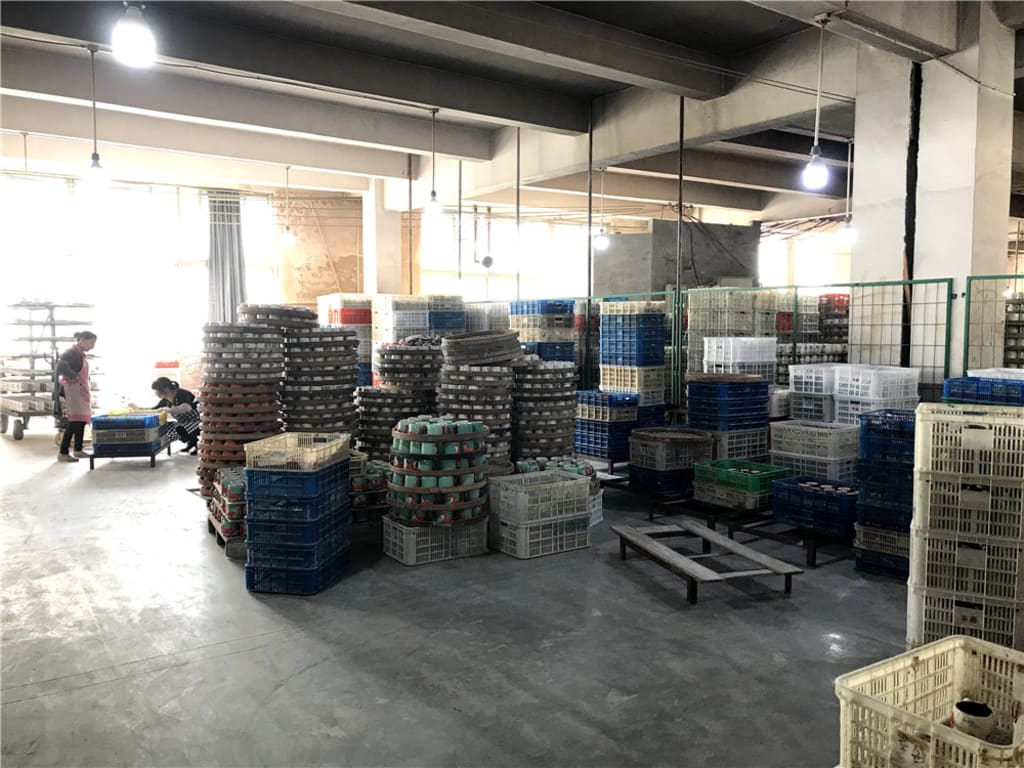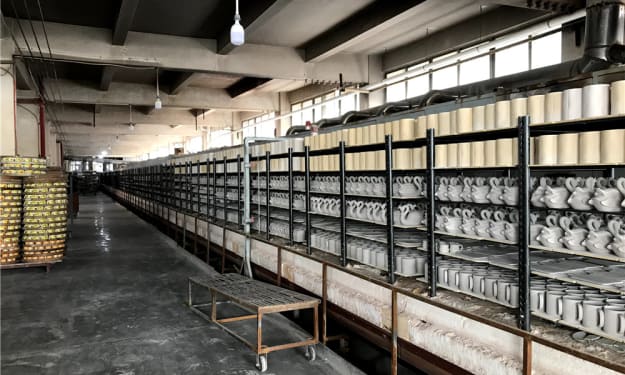How to take advantage of the benefits of ceramic additive manufacturing: Experts give their advice!
How to take advantage of the benefits of ceramic additive manufacturing: Experts give their advice!

Last year, SmarTech Investigation delivered its most recent report on ceramic 3D printing, assessing that the innovation will be worth around $4.8 billion by 2030. A genuine open door is step by step arising for the business, with additive manufacturing offering substantial advantages regarding part math, accessible materials, as well as manufacturing expenses and lead times. However customarily better known in the realm of machining, ceramics have a few fascinating properties and qualities for the aviation, clinical and accuracy projecting sectors. The chance today of 3D printing zirconia, alumina or carbide parts affects the makers? work process and their customary creation techniques. However, for what reason would it be advisable for them to go to 3D ceramic printing? What are the related benefits? What are the excess difficulties? Our experts offered us their viewpoint and guidance on how to really incorporate the innovation. ceramic manufacturer
Our most memorable master is Dr. Romain Faye who holds a PhD in Science and Materials and is the ongoing Research and development Undertaking Chief for Nanoe?s 3D printing. The French organization is a specialist in the creation of imaginative unrefined components and has begun to foster materials for additive manufacturing, especially ceramic and metal fibers. Our subsequent speaker is Vagelis Mavropoulis, Director of Lino3D?s 3D division. The Greek gathering helps makers in their manufacturing cycle, assisting them with picking the right interaction, the right materials and how to gain the fundamental abilities to figure out the stakes and working of 3D advances. At last, our third master is Olivier Greck, the Advancement and Improvement Business Supervisor at AVIGNON CERAMIC. The French organization has been specific starting around 1870 in infusion trim of refractory ceramic centers for venture projecting. The beyond couple of years, It has been putting resources into ceramic additive manufacturing.
Right now accessible advancements and materials
It is vital to recall that ceramic 3D printing processes are various and depend on various types of materials today (fibers, powder, tar, and so forth.). Without going too inside and out, you will find stereolithography advancements with actors, for example, 3DCeram, yet in addition Lithoz with DLP. Additionally, there is folio streaming with ExOne and material flying with XJet. Furthermore, ceramics can likewise be utilized with intertwined statement displaying (FDM) for certain actors, for example, Nanoe sending off into the creation of ceramic fibers viable with various machines available. As indicated by Romain Faye, the vital component prior to setting out on any speculation is to ?figure out the advantages and disadvantages of every innovation. It?s an issue of having the option to expect your necessities regarding part creation, accuracy, speed, plan, and so forth.?. This particular isn?t just substantial for ceramic additive manufacturing, yet means a lot to remember.
The cycle will rely upon the decision of material. A few kinds of ceramics presently exist available, we will consider the three significant families referenced by Romain Faye: oxides, carbides, and nitrides. The primary classification incorporates specialized ceramics like zirconia and alumina, yet in addition ceramics that are exceptionally biocompatible and therefore more well known in the clinical sector. Carbides and nitrides, then again, have fantastic thermal shock obstruction and high hardness, and in this way are all the more normally utilized in high-temperature applications. Olivier Greck adds: ?In additive manufacturing, we can work with all oxide ceramics (porcelain, zirconia, alumina, alumina-zirconia composites, cordierite) and as of late likewise with non-oxides (carbide and silicon nitride) to cover new applications that require rough wear obstruction, unbending nature or super refractoriness properties.?
What are the advantages of ceramic additive manufacturing?
One of the benefits of 3D printing overall is its capacity to create complex parts with mathematical shapes and examples that doesn?t otherwise sound conceivable, really. This is particularly evident with ceramic AM on the grounds that the materials utilized today (otherwise known as specialized materials) are more challenging to shape because of their hardness. Vagelis Mavropoulis makes sense of: ?One of the main advantages of 3D printing for all material kinds is remarkable capacity to manufacture hazardous calculations are difficult to accomplish with conventional techniques. This is particularly significant for ceramics, as additive manufacturing likewise considers the magnificent quality expected for their properties. Therefore, the creation of little series in ceramics will unquestionably be more prudent and proficient.? An assessment shared by Olivier Greck who makes sense of that additive manufacturing permits him to plan extremely complex turbine edge centers. A section that could never have otherwise been created.
Past this mathematical intricacy, the innovation acquires genuine benefits terms of creation lead times and expenses, as well as in the got last properties. It is entirely expected for 3D printed ceramic parts to supplant metal or polymer parts that were themselves picked not really for their properties but rather on the grounds that they are more straightforward to shape. Vagelis Mavropoulis proceeds: ?As an isotropic, extremely thick and impartial material, ceramics are starting to advance into different enterprises to supplant metal and plastic parts. This is a test in itself that requires the improvement of explicit abilities in 3D printing. ?What?s more, that is where a client should be prepared: ceramic AM requires strong information, both with regards to 3D printing yet in addition of the material. Romain Faye makes sense of: ?An organization that bosses part plan and polymer 3D printing should take into account the offices expected to complete intensity therapies. For an organization coming from the universe of ceramics, it is the 3D printing viewpoint that they should comprehend.?
Difficulties to be met
Heat treatment, and all the more especially the sintering stage, is a key stage in ceramic additive manufacturing, a stage that could be one of the significant obstructions to the full reception of the innovation. Oliver Greck states: ?Taking everything into account, the control of shrinkage during sintering is a vital boundary of progress. This impacts the degree of mechanical properties and won?t extra additive manufacturing methods which are intrinsically inhomogeneous since they are developed in progressive layers. An organization wishing to coordinate ceramic additive manufacturing should take this sintering system into account; it is a basic point both regarding material wellbeing and speculation.? This shrinkage ought to be considered as soon as the plan period of the part. The client should therefore remember that 3D displaying assumes a vital part in delivering quality parts. This point is accentuated by Lino3D?s master: ?Understanding the abilities of the innovation and adjusting it to the right application while opening up additional opportunities that were unthinkable with conventional techniques is fundamental. Obviously, information on every single accessible material and their properties is additionally a significant factor. What's more, it is truly vital to comprehend that another sort of plan approach is expected to benefit from CAM. It is so easy to Coordinate the actual innovation.?
Some last advice from our experts
Ceramic additive manufacturing has a splendid future ahead, particularly with regards to clinical applications. As we probably are aware, the wellbeing emergency has featured a few shortcomings in our ongoing frameworks. These shortcomings could be somewhat settled utilizing 3D printing advancements. On this point, Olivier Greck adds: ?Genuine open doors exist because of the developing necessities of item determinations that are pushing towards the utilization of ceramic materials and towards explicit calculations for additive manufacturing. The speed increase of configuration cycles and the requirement for quality prototypes that are created rapidly and without interest in costly framing tools likewise open up extraordinary possibilities. Past this, in the clinical field of bioceramic prostheses adjusted to the extraordinary morphology of the patient, the utilization of additive ceramic manufacturing is self-evident.?
Romain Faye adds: ?Zetamix is a phenomenal answer for start in ceramic 3D printing since it is a low speculation (10K euros). Likewise, Zetamix is not difficult to deal with and extremely adaptable since it tends to be utilized for both plastic and metal.?
Vagelis Mavropoulis closes: ?Feel free to with Administration Agencies to actually take a look at the similarity of the outcomes and empower yourself to analyze various arrangements. When the image is clear, taking the action and buy a fitting in-house system is a lot less complex.?
About the Creator
Dongsheng Ceramic
Fujian Dehua Dongsheng Ceramic Co.,LTD was founded in 1999.We make like planter, vase, candle jar, canister, mug, christmas halloween art craft.






Comments
There are no comments for this story
Be the first to respond and start the conversation.